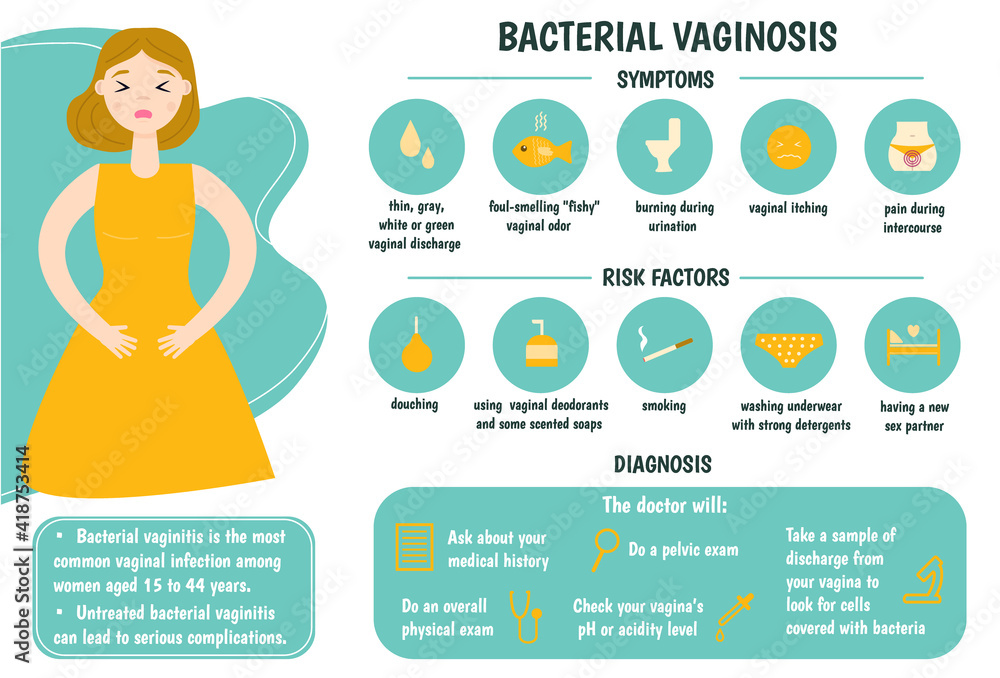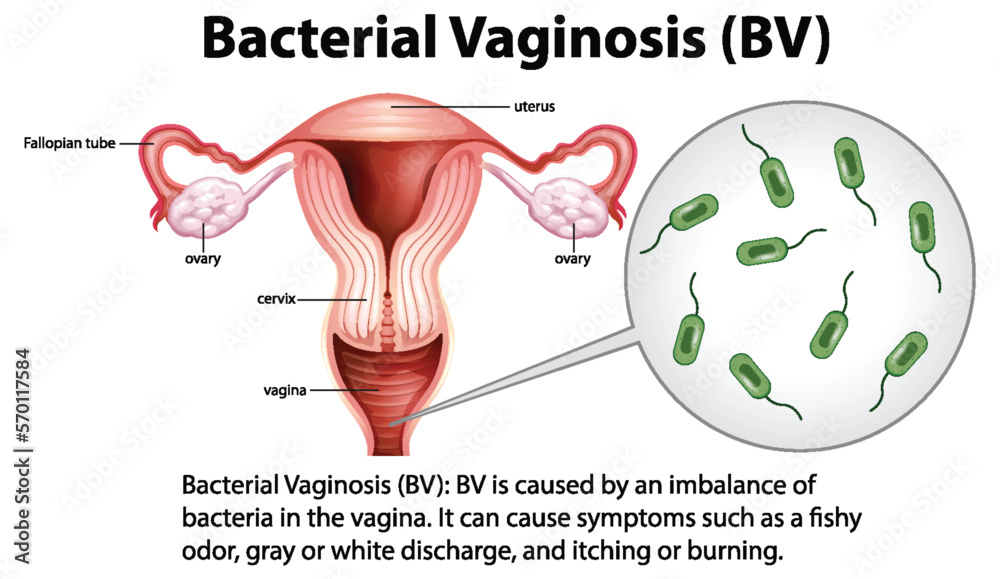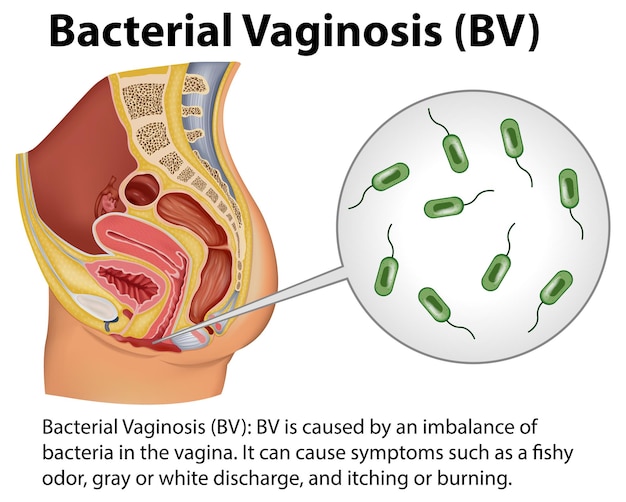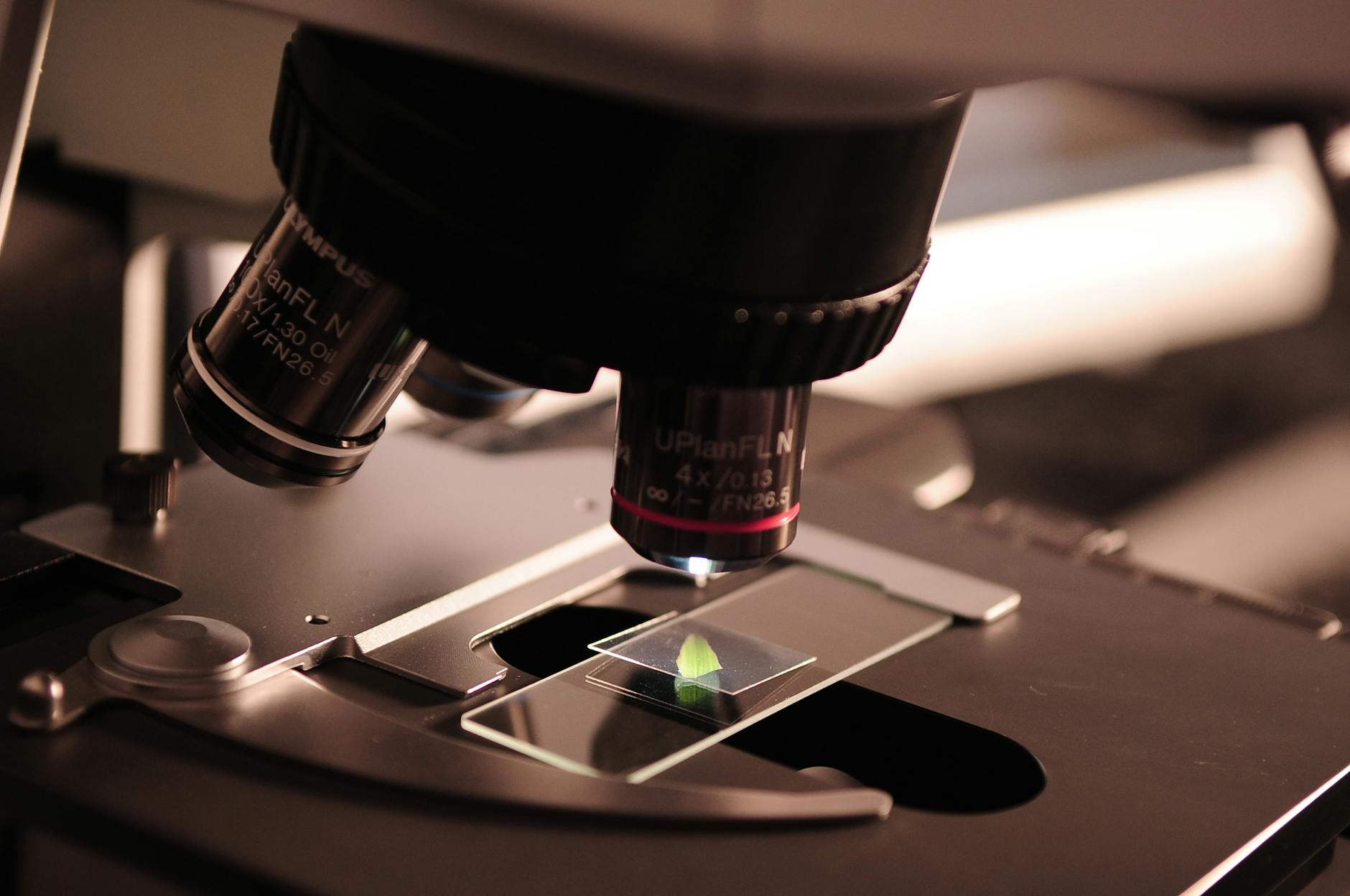Uncover the surprising truths behind what causes bacterial vaginosis – the answer may shock you. Don’t miss out!
Table of Contents
- Introduction: Understanding Bacterial Vaginosis
- What is Bacterial Vaginosis?
- The Microscopic World Inside Us
- Main Causes of Bacterial Vaginosis
- Symptoms to Look Out For
- The Difference Between Bacterial Vaginosis and a Yeast Infection
- How Is Bacterial Vaginosis Diagnosed?
- Potential Complications of Untreated Bacterial Vaginosis
- Ways to Prevent Bacterial Vaginosis
- Treatment Options for Bacterial Vaginosis
- Maintaining Healthy Vaginal Flora
- Recap: What We’ve Learned About Bacterial Vaginosis
- Frequently Asked Questions (FAQs)
Introduction: Understanding Bacterial Vaginosis
Welcome, young readers! Today, we’re going to talk about a topic called bacterial vaginosis and why it’s essential to understand it for overall vaginal health.
So, what is bacterial vaginosis, you may wonder? Well, let’s imagine your body is like a garden with many good and bad bacteria living inside. Sometimes, the balance of these bacteria in a part of your body called the vagina can get a little out of whack, leading to bacterial vaginosis.
Don’t worry, though! We’ll explain all about it in a fun and simple way. Are you ready to learn more about how our bodies work? Let’s dive in!
What is Bacterial Vaginosis?
Bacterial vaginosis is a common condition that can happen to anyone, even though it might sound a bit scary. It’s when there’s an imbalance of bacteria in a person’s vaginal area, which can cause some discomfort. When you hear about bacteria, don’t worry! Not all bacteria are bad – some are actually good for our bodies. But when the bad bacteria start to take over, that’s when bacterial vaginosis can occur.
Imagine your vagina as a little ecosystem, like a tiny world inside your body. In this world, there are both good and bad bacteria living together. Usually, the good bacteria keep the bad bacteria in check, maintaining a healthy balance. When this balance is disrupted, that’s when problems like bacterial vaginosis might pop up. So, it’s important to help your body keep this delicate balance to stay healthy!
So, bacterial vaginosis happens when there are too many bad bacteria and not enough good bacteria in the vagina. This can cause issues like unusual discharge or odor, and sometimes discomfort. The good news is that it’s usually easy to treat and manage, so don’t worry too much if you or someone you know experiences it!
The Microscopic World Inside Us
Our bodies are home to trillions of tiny organisms that live on and inside us. These minuscule creatures, known as bacteria, can be found in various parts of our body, including our skin, mouth, and gut. One specific area where bacteria play a crucial role is in our vagina. Let’s dive into the microscopic world inside us to understand why these bacteria are so important for our vaginal health.

Image courtesy of stock.adobe.com via Google Images
The Importance of Vaginal Health
Our vagina is like a delicate ecosystem that is naturally populated by different types of bacteria. When this balance is maintained, it helps to keep our vaginal environment healthy and functioning properly. These bacteria help to prevent harmful organisms from causing infections and maintain the acidity levels needed for a healthy vagina.
However, sometimes this balance can be disrupted, leading to a condition known as bacterial vaginosis. When the harmful bacteria outnumber the good bacteria in the vagina, it can result in symptoms like unusual discharge and odor.
Therefore, maintaining the right balance of bacteria in our vaginal microbiome is crucial for overall vaginal health.
By understanding the microscopic world inside us, we can appreciate the intricate balance of bacteria that exists within our bodies and how it influences our health.
Main Causes of Bacterial Vaginosis
One of the primary causes of bacterial vaginosis is the overgrowth of harmful bacteria in the vagina. Normally, the vagina has a delicate balance of good and bad bacteria. When this balance is disrupted, it can lead to an increase in bad bacteria, resulting in bacterial vaginosis.
Lifestyle and BV
Certain lifestyle factors can also contribute to the development of bacterial vaginosis. Practices such as douching, using scented hygiene products, or having a new sexual partner can upset the natural bacterial balance in the vagina, making it more susceptible to bacterial vaginosis.
Hormonal Changes and BV
Hormonal changes, especially during menstruation or pregnancy, can play a role in triggering bacterial vaginosis. These fluctuations in hormone levels can disrupt the normal vaginal flora, creating an environment conducive to the growth of harmful bacteria that cause bacterial vaginosis.
Symptoms to Look Out For
When it comes to bacterial vaginosis, there are some key signs that can help you identify if you might have this condition. It’s important to pay attention to these symptoms as they can indicate a potential issue with your vaginal health.

Image courtesy of stock.adobe.com via Google Images
Unusual Discharge
One of the most common symptoms of bacterial vaginosis is a change in vaginal discharge. You might notice that your discharge is thin, watery, and has a strong, fishy odor. This discharge may also be white or gray in color, different from your usual discharge. Paying attention to these changes can help you catch bacterial vaginosis early.
Itching or Burning Sensation
Another symptom to look out for is any itching or burning sensation in the vaginal area. If you experience discomfort or irritation, especially when urinating, it could be a sign of bacterial vaginosis. It’s important not to ignore these sensations and consult a healthcare provider if they persist.
Changes in pH Balance
Bacterial vaginosis can also disrupt the natural pH balance of the vagina. You may notice a change in the odor of your vaginal area, particularly after sex. This change in pH balance can lead to a strong, unpleasant smell that is a key indicator of bacterial vaginosis.
By being aware of these symptoms, you can take proactive steps to address any potential issues with your vaginal health. If you notice any of these signs, it’s essential to seek medical advice to determine the appropriate course of action.
The Difference Between Bacterial Vaginosis and a Yeast Infection
When it comes to issues that affect vaginal health, two common conditions that women may encounter are bacterial vaginosis and yeast infections. While both can cause discomfort and disruption, they are actually quite different in terms of their causes and symptoms.
Understanding Bacterial Vaginosis
Bacterial vaginosis is a condition caused by an imbalance of bacteria in the vagina. It occurs when the amount of harmful bacteria in the vagina overgrows, leading to symptoms like unusual discharge and odor.
The Characteristics of a Yeast Infection
On the other hand, a yeast infection is caused by an overgrowth of a type of fungus called Candida. This infection can cause itching, irritation, and a thick, white discharge that resembles cottage cheese.
Distinguishing Features Between the Two
One of the key differences between bacterial vaginosis and yeast infections is the type of organisms responsible for the imbalance. Bacterial vaginosis is caused by bacteria, while yeast infections are caused by fungus.
Another important distinction is in the symptoms they produce. Bacterial vaginosis usually leads to a thin, greyish discharge with a fishy odor, while yeast infections result in a thick, white discharge with a texture like cottage cheese.
It is crucial to differentiate between the two conditions because their treatments vary. Bacterial vaginosis is usually treated with antibiotics, while yeast infections are typically treated with antifungal medication. Therefore, it is essential to consult a healthcare provider for an accurate diagnosis and the right course of treatment.
How Is Bacterial Vaginosis Diagnosed?
When it comes to figuring out if someone has bacterial vaginosis, healthcare providers have a couple of methods they can use to make a diagnosis. Here are the steps involved in diagnosing this common vaginal issue:

Image courtesy of www.freepik.com via Google Images
Evaluating Symptoms
The first step in diagnosing bacterial vaginosis is for the healthcare provider to ask about any symptoms the person is experiencing. These symptoms could include unusual vaginal discharge, a strong fishy odor, itching, or burning sensations in the vaginal area. By listening to the person’s description of their symptoms, the healthcare provider can start to determine if bacterial vaginosis might be the cause.
Physical Examination
After discussing symptoms, the healthcare provider may need to perform a physical examination. This can involve looking at the vagina and cervix closely to check for any signs of infection or inflammation. While this part of the process might sound a bit daunting, it’s actually a routine procedure and nothing to be worried about.
Vaginal pH Testing
Another common way to diagnose bacterial vaginosis is through a vaginal pH test. This test helps determine the acidity of the vagina, as bacterial vaginosis often leads to an increase in pH levels. By using a simple swab to collect a sample of vaginal discharge, the healthcare provider can quickly analyze the pH level to see if it falls within the range associated with bacterial vaginosis.
Microscopic Examination
In some cases, the healthcare provider might take a sample of the vaginal discharge and examine it under a microscope. This allows them to look closely at the types of bacteria present in the sample. By identifying specific bacteria associated with bacterial vaginosis, they can confirm the diagnosis and recommend appropriate treatment.
Potential Complications of Untreated Bacterial Vaginosis
When bacterial vaginosis is left untreated, it can lead to various complications that can impact a person’s overall health. Let’s explore some of the potential risks associated with ignoring bacterial vaginosis.
The Risk of Developing STDs
Bacterial vaginosis can increase the vulnerability of contracting sexually transmitted diseases (STDs) such as chlamydia, gonorrhea, or HIV. The imbalance of bacteria in the vagina weakens its natural defenses, making it easier for harmful pathogens to enter the body during sexual activity.
Urinary Tract Infections (UTIs)
Untreated bacterial vaginosis can also pave the way for urinary tract infections (UTIs) to occur. The proximity of the urethra to the vagina allows harmful bacteria from bacterial vaginosis to travel up the urinary tract, leading to painful and uncomfortable UTIs.
Long-Term Health Effects
Chronic untreated bacterial vaginosis has been associated with long-term health effects such as an increased risk of pelvic inflammatory disease (PID). PID can cause severe complications like infertility, ectopic pregnancy, and chronic pelvic pain if left unchecked.
It is essential to address bacterial vaginosis promptly to reduce the likelihood of these complications and maintain optimal vaginal health.
Ways to Prevent Bacterial Vaginosis
Preventing bacterial vaginosis is essential for maintaining good vaginal health. By adopting certain habits and making smart choices, you can decrease your risk of developing this condition. Let’s explore some effective strategies to keep bacterial vaginosis at bay.

Image courtesy of www.shutterstock.com via Google Images
Regular Hygiene Practices
One of the most important ways to prevent bacterial vaginosis is to maintain good hygiene. This includes washing your genital area with mild soap and water daily. Remember to always wipe from front to back after using the restroom to avoid introducing harmful bacteria into the vagina.
Avoid Douching
Although it may seem like a good idea to cleanse the vagina by douching, this can actually disrupt the natural balance of bacteria and lead to bacterial vaginosis. It is best to avoid douching altogether and let your body’s natural mechanisms do their job.
Wear Breathable Clothing
Tight-fitting clothes, particularly synthetic materials, can create a warm and moist environment that promotes the growth of harmful bacteria. Opt for breathable cotton underwear and loose-fitting clothing to allow proper airflow and reduce the risk of bacterial vaginosis.
Practice Safe Sex
Engaging in unprotected sex with multiple partners can increase your chances of developing bacterial vaginosis. Using condoms can help reduce the risk of sexually transmitted infections that may lead to bacterial vaginosis. Remember, practicing safe sex is crucial for your vaginal health.
| Factor | Description |
|---|---|
| Potential Cause | Overgrowth of harmful bacteria in the vagina, disrupting the natural balance of bacteria |
| Sexual Activity | Having multiple sexual partners or a new sexual partner can increase the risk of developing bacterial vaginosis |
| Douching | Using vaginal douches or feminine hygiene products can disrupt the vaginal flora and increase the likelihood of bacterial vaginosis |
| Antibiotics | Taking antibiotics can kill off the healthy bacteria in the vagina, allowing harmful bacteria to overgrow |
| Poor Hygiene | Not maintaining proper vaginal hygiene can lead to the development of bacterial vaginosis |
Manage Health Conditions
Some health conditions like diabetes or a weakened immune system can make you more susceptible to infections, including bacterial vaginosis. By managing these conditions effectively and following your healthcare provider’s recommendations, you can lower your risk of developing bacterial vaginosis.
Consider Lactose Intolerance
While more research is needed in this area, some studies suggest a possible link between lactose intolerance and an increased risk of bacterial vaginosis. If you have lactose intolerance, speak to your healthcare provider about dietary modifications that may help maintain a healthy vaginal environment.
Treatment Options for Bacterial Vaginosis
When it comes to managing and curing bacterial vaginosis, there are several treatment options available. The treatment chosen by healthcare providers can vary depending on the severity of the condition and the individual’s medical history.
Prescription Medications
One common treatment for bacterial vaginosis is the use of prescription medications. These medications are typically antibiotics that help eliminate the harmful bacteria causing the infection. It’s essential to follow the prescription instructions carefully and complete the full course of medication as directed by your healthcare provider.
Probiotics
Probiotics are another option that some healthcare providers recommend for managing bacterial vaginosis. Probiotics are beneficial bacteria that can help restore the natural balance of bacteria in the vagina. They are available in various forms, such as oral supplements or vaginal suppositories.
Vaginal Gels or Creams
Some healthcare providers may suggest the use of vaginal gels or creams to treat bacterial vaginosis. These products can help soothe discomfort and may contain ingredients that target the bacteria causing the infection. It’s essential to use these products according to the instructions provided.
Home Remedies
While it’s crucial to consult a healthcare provider for proper diagnosis and treatment, some individuals may find relief from bacterial vaginosis symptoms by using home remedies. These may include practices such as maintaining good hygiene, wearing breathable cotton underwear, and avoiding perfumed products in the genital area.
Remember, it’s essential to consult a healthcare provider before trying any home remedies to ensure they are safe and effective for your specific situation.
Maintaining Healthy Vaginal Flora
Having a healthy vagina is essential for overall well-being. One vital aspect of vaginal health is maintaining the right balance of bacteria in the vaginal flora. Let’s explore some ways to keep your vaginal flora in top shape!

Image courtesy of www.freepik.com via Google Images
The Role of Healthy Bacteria
Your vagina is home to various types of bacteria, including Lactobacillus, that help maintain a healthy environment. These “good” bacteria play a crucial role in warding off harmful pathogens and keeping your vagina pH-balanced.
How to Support Vaginal Flora
To promote a healthy balance of bacteria in your vagina, it’s essential to practice good hygiene habits. Avoid using harsh soaps or douches, as they can disrupt the natural balance of microorganisms. Opt for gentle, unscented products to keep your vagina clean.
Additionally, wearing breathable cotton underwear and avoiding tight-fitting clothing can help prevent moisture buildup, which can create an environment for harmful bacteria to thrive.
The Impact of Diet on Vaginal Health
Believe it or not, what you eat can also influence the health of your vaginal flora. Some studies suggest that individuals with lactose intolerance may be more prone to bacterial vaginosis. Maintaining a balanced diet rich in probiotics, such as yogurt and fermented foods, may support the growth of beneficial bacteria in your vagina.
Remember, keeping a healthy balance of bacteria in your vaginal flora is essential for preventing infections like bacterial vaginosis. By practicing good hygiene, wearing breathable clothing, and choosing a diet that supports vaginal health, you can help maintain a harmonious environment in your most intimate area.
Recap: What We’ve Learned About Bacterial Vaginosis
In this article, we have delved into the world of bacterial vaginosis, a common condition that affects many people. Understanding bacterial vaginosis is essential for maintaining good vaginal health, and knowing its causes, symptoms, and treatment options can help you stay healthy and informed. Let’s recap some key points we’ve covered:
What is Bacterial Vaginosis?
Bacterial vaginosis is a condition where the balance of bacteria in the vagina is disrupted, leading to an overgrowth of harmful bacteria. This imbalance can result in symptoms such as unusual vaginal discharge, itching, and a fishy odor.
The Microscopic World Inside Us
Our vaginas host a delicate ecosystem of bacteria that normally work in harmony to keep us healthy. When this balance is disturbed, conditions like bacterial vaginosis can occur, highlighting the importance of maintaining good vaginal health.
Main Causes of Bacterial Vaginosis
Harmful Bacteria Overgrowth: An overgrowth of bad bacteria in the vagina can lead to bacterial vaginosis. Lifestyle and hormonal changes can also contribute to the development of this condition.
Symptoms to Look Out For
If you experience symptoms like unusual vaginal discharge, itching, or a fishy odor, you may have bacterial vaginosis. It’s essential to seek medical advice for proper diagnosis and treatment.
The Difference Between Bacterial Vaginosis and a Yeast Infection
Bacterial vaginosis and yeast infections are both common conditions, but they are caused by different factors. Understanding the distinctions between the two can help you identify the right treatment.
How Is Bacterial Vaginosis Diagnosed?
Your healthcare provider can diagnose bacterial vaginosis through a simple examination and testing of vaginal samples. Seeking professional help is crucial for accurate diagnosis and treatment.
Potential Complications of Untreated Bacterial Vaginosis
Untreated bacterial vaginosis can lead to serious complications, such as an increased risk of other infections like STDs and urinary tract infections. Prompt treatment is essential to prevent these risks.
Ways to Prevent Bacterial Vaginosis
Maintaining good vaginal health through healthy habits and practices can help prevent bacterial vaginosis. While certain factors like lifestyle choices and hormonal changes can play a role, taking preventive measures is vital.
Treatment Options for Bacterial Vaginosis
Various treatment options, including antibiotics and probiotics, are available for managing and curing bacterial vaginosis. Consulting with your healthcare provider can help determine the best treatment for your specific case.
Maintaining Healthy Vaginal Flora
By adopting healthy habits and paying attention to your diet, you can support the balance of bacteria in your vagina. Maintaining a healthy vaginal flora is essential for preventing conditions like bacterial vaginosis.
Overall, being aware of the causes, symptoms, and treatment options for bacterial vaginosis is crucial for maintaining good vaginal health. Remember, if you suspect you have bacterial vaginosis, seek medical advice for proper diagnosis and treatment to stay healthy and happy!
Frequently Asked Questions (FAQs)
What is the best way to maintain vaginal health?
Keeping your vaginal area clean and dry, wearing breathable cotton underwear, and avoiding harsh soaps or douches are all essential for maintaining good vaginal health. Also, it’s important to practice safe sex and seek medical advice for any unusual symptoms.
Can bacterial vaginosis lead to sexually transmitted diseases (STDs)?
Bacterial vaginosis itself is not a sexually transmitted infection, but having BV can increase your risk of contracting other STDs. It’s crucial to get tested regularly and practice safe sex to protect yourself and your partner.
Is there a connection between lactose intolerance and bacterial vaginosis?
No direct link has been established between lactose intolerance and bacterial vaginosis. While a healthy diet can contribute to overall well-being, lactose intolerance is unrelated to the development of bacterial vaginosis.
Can a urinary tract infection (UTI) lead to bacterial vaginosis?
A UTI and bacterial vaginosis are two separate conditions that can occur independently. However, having one may increase the risk of developing the other due to changes in the vaginal microbiome. It’s important to seek medical attention if you suspect you have a UTI or BV.
Is a yeast infection the same as bacterial vaginosis?
No, yeast infections and bacterial vaginosis are distinct conditions caused by different factors. Yeast infections result from an overgrowth of Candida yeast, while BV occurs due to an imbalance in vaginal bacteria. If you experience symptoms, it’s best to consult a healthcare provider for proper diagnosis and treatment.





